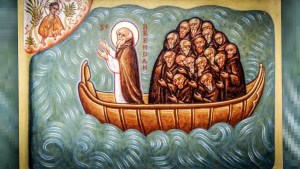St. Albert the Great was a well-known philosopher, theologian and scientist of the 13th century. The depth of his knowledge had a lasting influence in the Catholic Church as well as in the development of science.
He wrote a variety of commentaries on scientific study, exploring the writings of Aristotle, but also giving his own opinions after conducting his own research.
St. Albert observed the natural world and explained that “the aim of natural science is not simply to accept the statements [narrata] of others, but to investigate the causes that are at work in nature.“
In his own observations, St. Albert further confirmed that the world that is spherical in shape, as opposed to a flat earth.
An island to the West
This led him to believe that there may exist an undiscovered land beyond the sea, in what is modern-day America. The Catholic Encyclopedia explains his theory.
In Augusta Theodosia Drane’s excellent work on “Christian Schools and Scholars” (419 sqq.) there are some interesting remarks on “a few scientific views of Albert, which show how much he owed to his own sagacious observation of natural phenomena, and how far he was in advance of his age. . . .” In speaking of the British Isles, he alluded to the commonly received idea that another Island — Tile, or Thule — existed in the Western Ocean, uninhabitable by reason of its frightful clime, “but which”, he says, has perhaps not yet been visited by man.” Albert gives an elaborate demonstration of the sphericity of the earth; and it has been pointed out that his views on this subject led eventually to the discovery of America.
Prior to St. Albert, there are stories of St. Brendan as well as the Vikings discovering America, but some in mainland Europe were unsure about what would happen sailing West.
St. Albert’s theories laid a foundation for later scientists and adventurers who would eventually embark on explorations of the continent.


